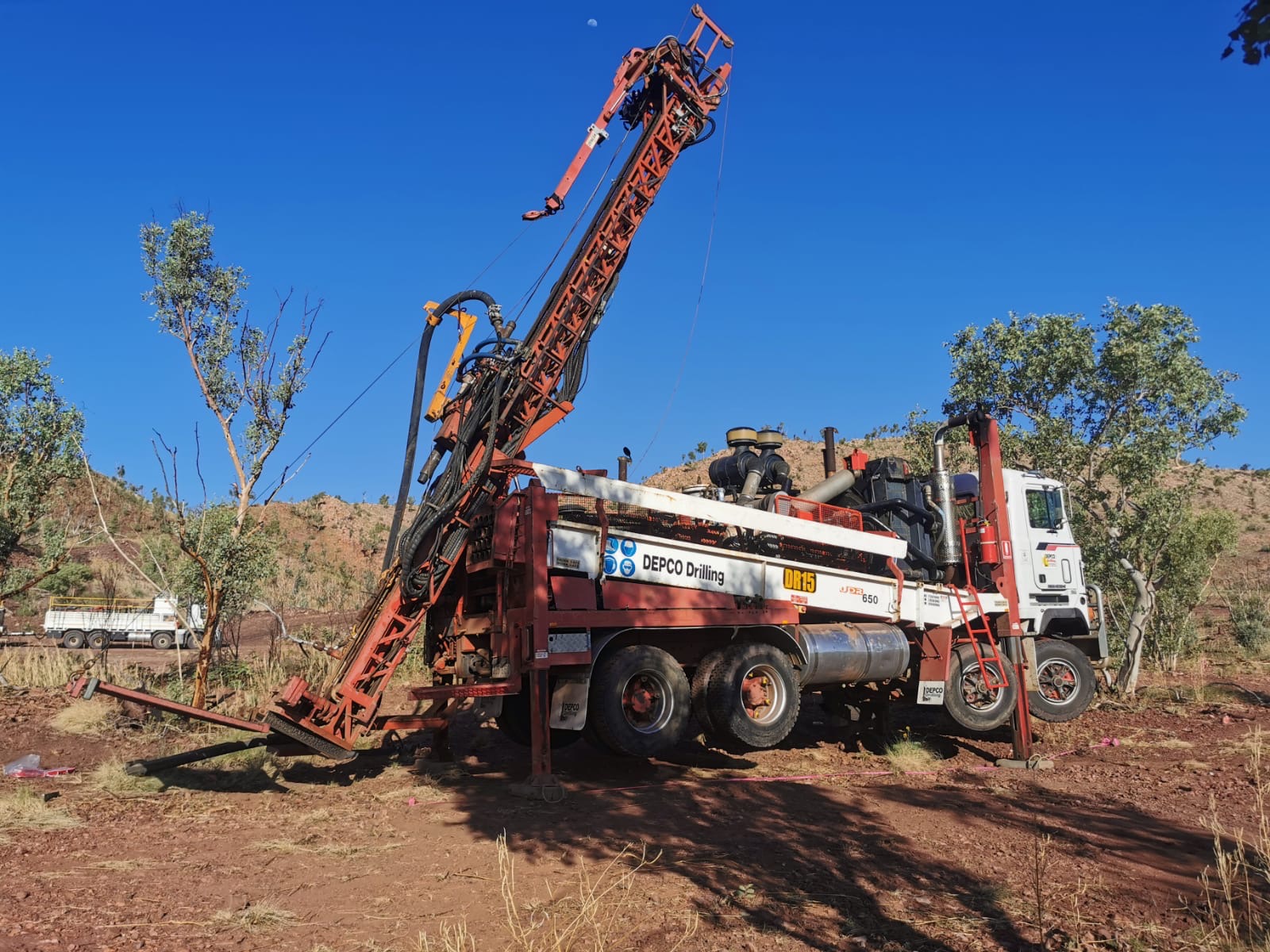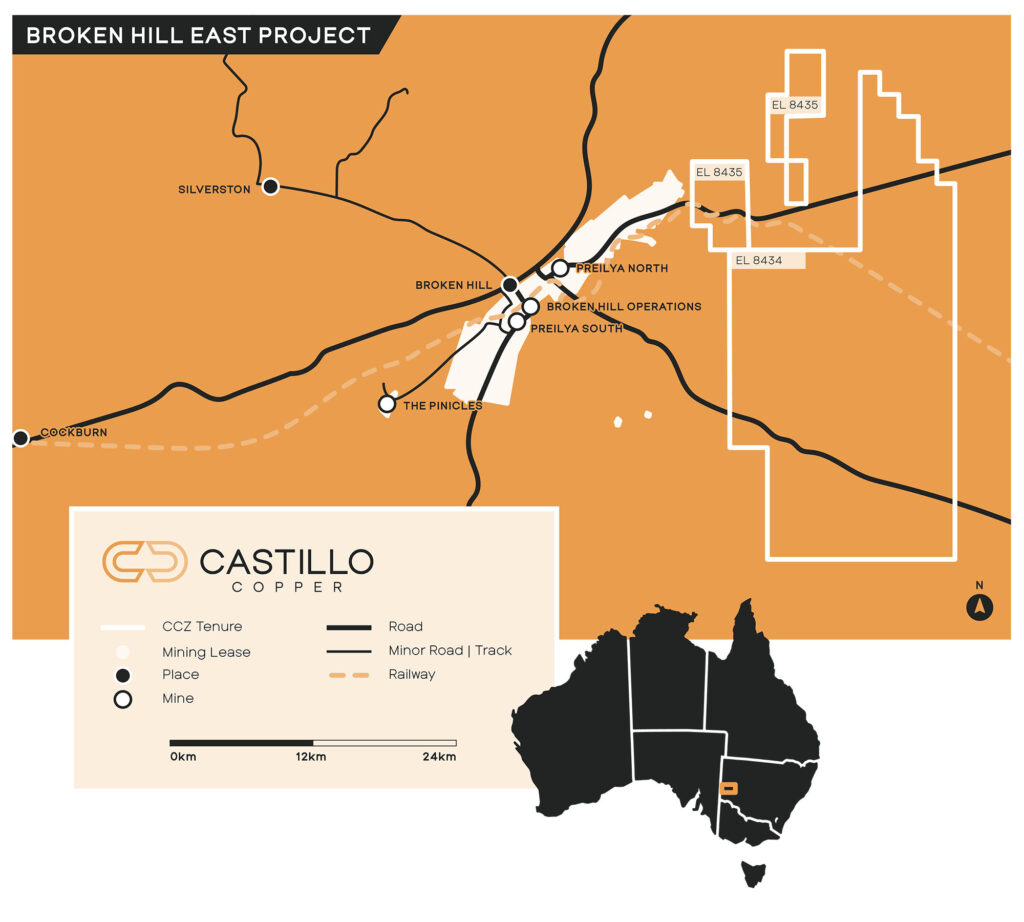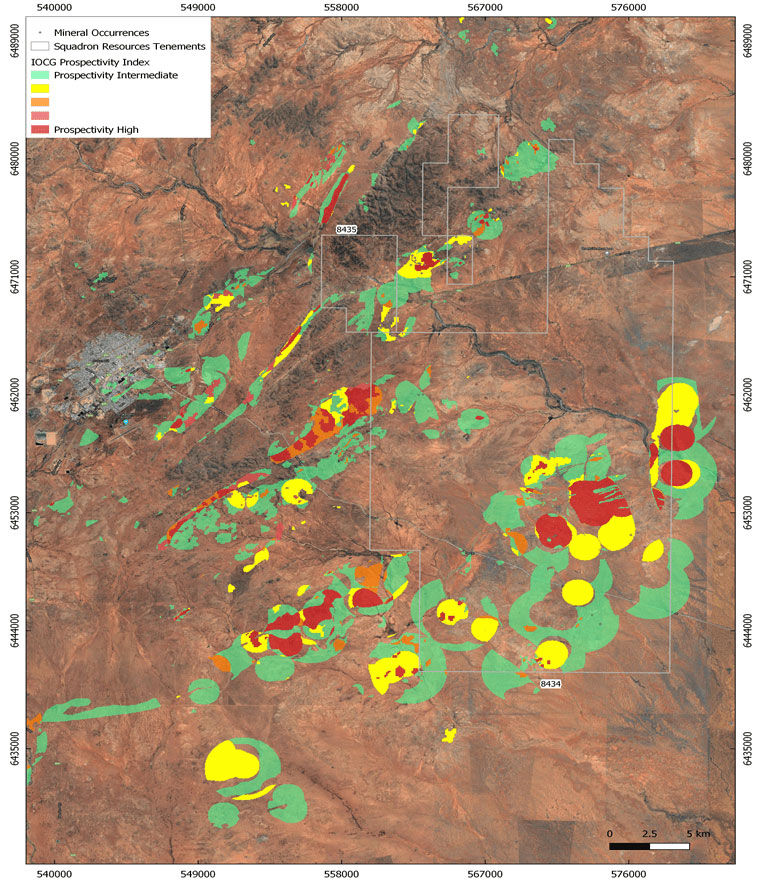LOCATION
NSW, Australia
YEAR
Since July 2017
POTENTIAL
2 Targets
MINERALISATION
IOCG
The 100% owned Broken Hill East Project, situated to the east of the historic mining town of Broken Hill, is ‘highly prospective’ for Iron Oxide Copper Gold (IOCG) mineralisation.
Overview

Located next to the world’s largest high-grade zinc-silver-lead deposit.
The Geological Survey of NSW (GSNSW) modelling highlights the ground is prospective for IOCG mineralisation.
Extensive historical exploration database has provided Castillo Copper with at least 5 walk up targets, including the major ‘Iron Blow’ and ‘The Sisters’ prospects.
Maiden JORC MRE:
64Mt @ 318 ppm Co for 21,556t contained cobalt and 63Mt @ 700ppm Cu for 44,260t of contained copper.
Geology
The Broken Hill East Project consists of two tenements covering 684.3km2 (EL8434 and EL8435).
Regionally, the project area is situated in the Broken Hill spatial domain, which extends from far western New South Wales into eastern South Australia. The nearby Broken Hill polymetallic deposits are located within Curnamona Province (Willyama Super group) that hosts several world-class deposits of lead, zinc, silver, and copper. The Willyama Supergroup consists of highly deformed meta-sedimentary schists and gneisses with abundant quartz-feldspathic gneisses, lesser basic gneisses, and minor mineralised lode rocks.
The Broken Hill Domain also hosts several major fault systems and shear zones, which were formed by various deformation events and widespread metamorphism which has affected the Willyama Supergroup. Major faults in the region include the Mundi Mundi Fault to the west of the tenure, the Mulculca Fault to the east, and the Redan Fault to the south. The area is also surrounded by extensive shear zones, including the Stephens Creek, Globe-Vauxhall, Rupee, Albert, Pine Creek and Thackaringa-Pinnacles Shear Zones.
Applying the Geological Survey of NSW (GSNSW) predictive geological model to the project area illustrates it is “Highly Prospective” for IOCG style mineralisation (gold-copper primarily).
Notably, the prospectivity indexes demonstrate one of the largest continuous untested IOCG trends that has surfaced from recent work. This delivers several walk-up drill targets, subject to geochemical and/or geophysical survey confirmation.
Interestingly, a scarcity of drilling along the south-east portion of the EL 8434 is due to significant post-depositional cover observed across large swathes of the tenure. However, the insights from the model provide exploration upside for IOCG mineralisation, as work so far has mostly focused on outcropping bedrock with areas of cover largely ignored.
EXPLORATION
Significant exploration activities have been conducted in the region, primarily by companies such as North Broken Hill Pty Ltd, Pasminco, CRA Exploration, Normandy Exploration, and Vale-Inco. These previous explorers often drilled shallow auger holes to penetrate through the Quaternary soils, gravels, and Tertiary clays, which can vary in thickness from 0 to 40 metres.
Samples showing anomalous levels of copper (Cu), lead (Pb), or zinc (Zn), were further investigated using rotary air blast (RAB), reverse circulation (RC), or diamond core drilling methods. It’s worth noting that more than 92% of the historical boreholes examined are shallower than 50 metres, so the full extent of mineralisation at greater depths remains unknown.
Since acquiring EL8434 and EL8435 in late 2020, the Board’s strategic intent for the Broken Hill East Project is to extend known mineralisation across the project area and enhance the confidence and grade of the June 2022 released Maiden Mineral Resource Estimate (MRE).
The maiden MRE, compliant with the JORC (2012) standards, indicates 64Mt @ 318 ppm Co for 21,556t contained cobalt metal at relatively shallow depths (2-80m). In addition, the global MRE includes 44,260t of contained copper (63Mt @ 700ppm).
To estimate the MRE, Castillo’s geological team utilised historical drilling data gathered from 1970 to 2014. This dataset included data from reverse circulation, rotary air blast, and diamond core drilling campaigns, which was then used to generate block models.
A primarily cobalt-focused drilling campaign, consisting of twelve reverse circulation (RC) boreholes and one diamond drillhole began in October 2022, targeting the Fence Gossan, Reef Tank and Tors Tank Prospects within EL 8434.
The results of assays from 7 drillholes in the Fence Gossan and Tors Tank Prospects, along with a geochemical auger survey consisting of 209 stations conducted across Fence Gossan, revealed a noteworthy discovery of shallow clay-hosted Rare Earth Elements (REE).
Although the cobalt assays were in line with expectations, this newfound discovery prompted the Board to shift its strategic focus towards gaining a deeper understanding of the extent of REE mineralisation throughout the broader project area.
To assess the feasibility of extracting REE from shallow clay deposits, metallurgical test work was conducted by ALS Perth and ANSTO.
Exploration Upside
The geological team has made promising observations that provide a strong basis for substantial exploration potential within the Broken Hill East Project area. This potential is underscored by the presence of geophysical anomalies at the Iron Blow and The Sisters Prospects, which are both accompanied by supporting soil geochemistry data, warranting further investigation.



